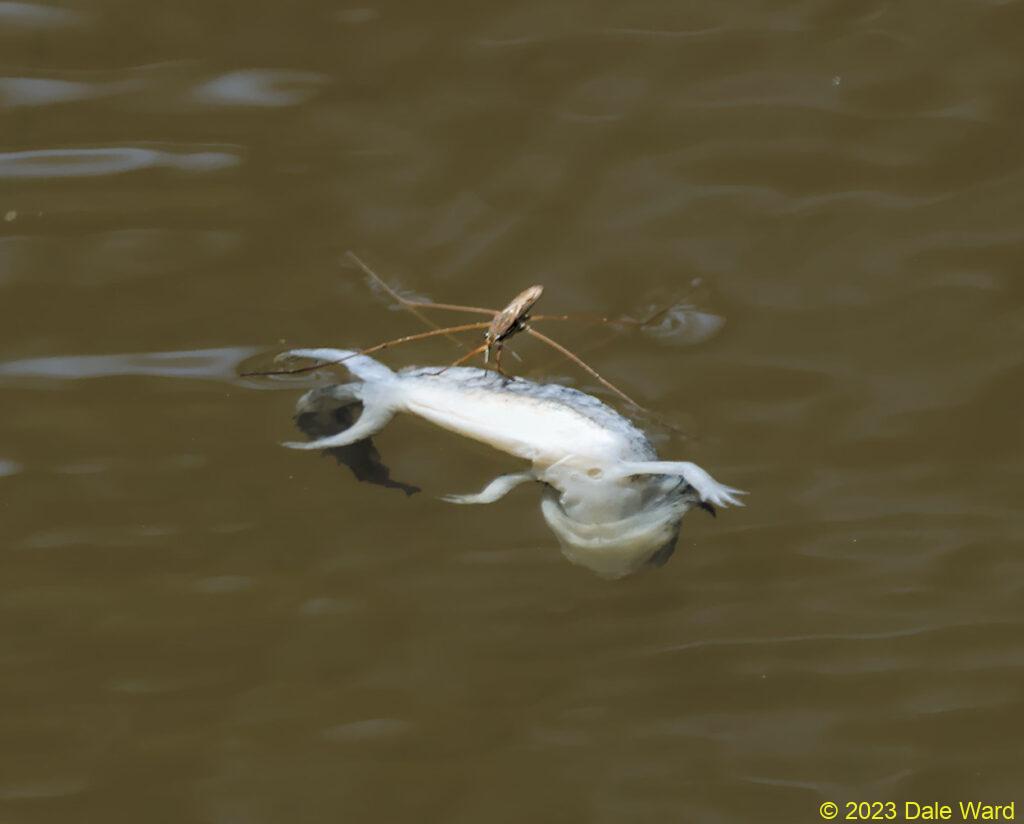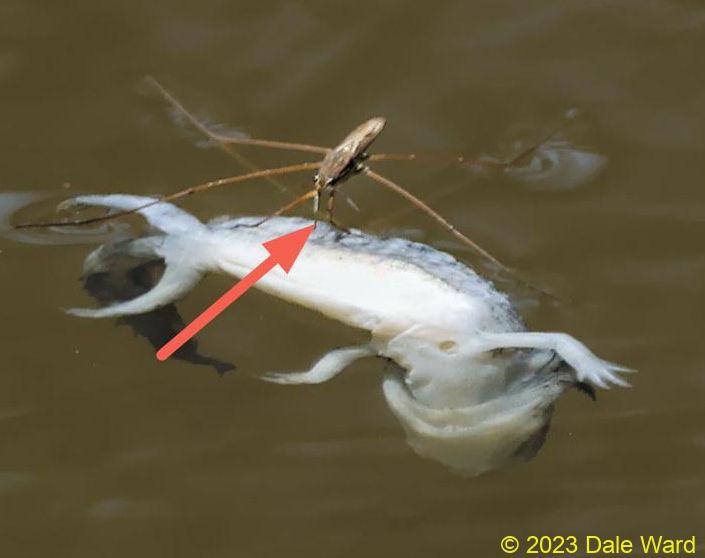A Water Strider scavenging on dead Tiger Salamander larva?
Observations of a Water Strider scavenging on a dead Tiger Salamander larva. Udpate - this cattle tank has since tested positive for ranavirus, via eDNA testing.
Here’s something I’ve not seen before - a Water Strider scavenging on a dead Tiger Salamander larva.
 Water Strider scavenging on dead Ambystoma Salamander
Water Strider scavenging on dead Ambystoma Salamander
I was photographing Tiger Salamander larvae at one of my local ponds a couple of days ago (2023-07-31). This site is in a Ponderosa Pine forest in Southwestern Colorado, at about 7800’. There were a lot of Salamander larvae in the pond, and they mostly looked pretty good - swimming, foraging, etc.
There were, however, 8-10 dead larvae visible in the water. Some were floating on the surface, others were dead on the bottom of the pond.
I’ve seen die-offs in this tank before, and I’m not sure what causes it. It might be related to the nutrient levels in the water from cattle grazing - the water smells pretty manure-y. It could also be a pathogen of some sort, or some other cause. I’m not sure.
I photographed a Water Strider that was standing over one of the floating Tiger Salamanders corpses. It stayed on the corpse for at least a five minutes. I was mostly interested in getting a better view of the round lesion on the Tiger Salamander’s chest and I wasn’t paying much attention to the Water Strider.
When I got home and looked more closely at the photos, I saw that the Water Strider appeared to have its sucking mouth parts piercing the Tiger Salamander’s corpse.
 Water Strider scavenging on dead Ambystoma Salamander - arrow in photo points to mouthparts
Water Strider scavenging on dead Ambystoma Salamander - arrow in photo points to mouthparts
I think this is interesting because, while I’ve heard about Water Striders scavenging dead insects, I’ve not heard heard about them scavenging on dead vertebrates.
Pretty neat.
2024 Update - This tank tested positive for ranavirus
Colorado Parks and Wildlife tested performed eDNA testing on this tank for ranavirus and two types of chytrid fungus. This tank tested positive for ranavirus. For more information, check out this post: Diseases and Die-offs - More Tiger Salamanders, and an encounter with Ranavirus.